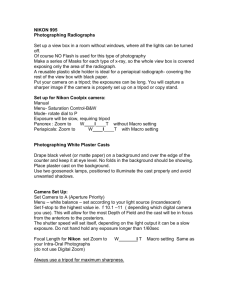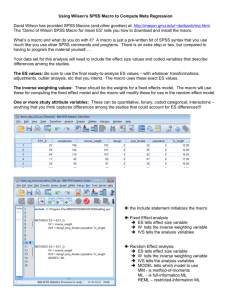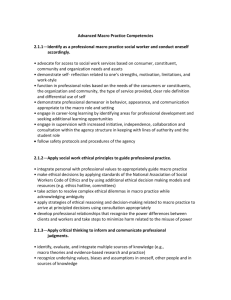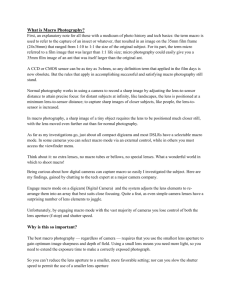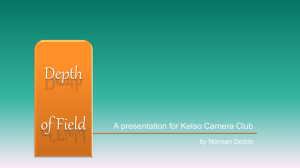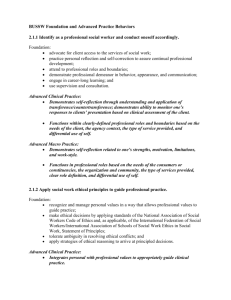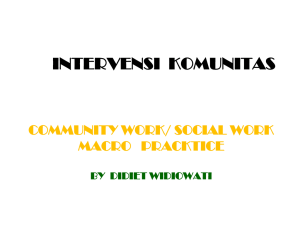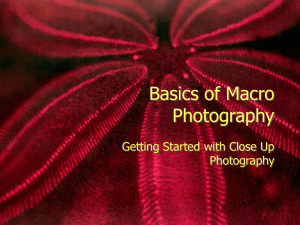Macro Photography: Techniques & Equipment
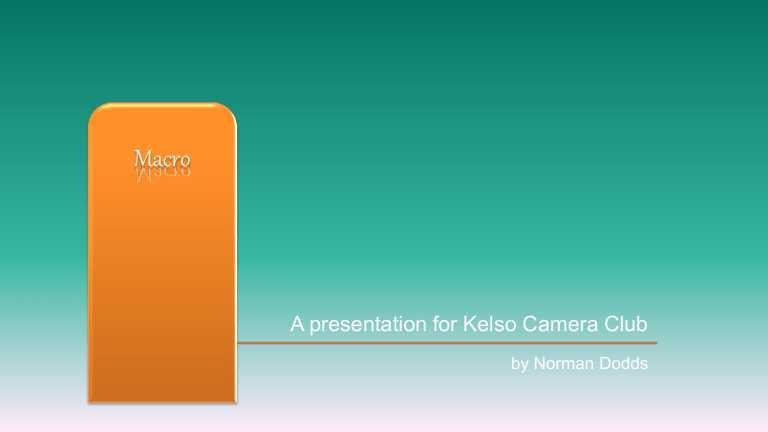
Macro
A presentation for Kelso Camera Club by Norman Dodds
What is macro?
• From Makros – a Greek word meaning large, long
• Macro is the term used to describe photographs where the subject is recorded as life size or up to 10 times bigger than life size.
• Close-up is where the subject is recorded between one tenth of its actual size to life size.
• Macro and close-up are often used interchangeably!
What do you need for macro photography?
• A camera which can focus close to the subject – many compacts have a macro setting
• A reversing ring – allows you to fit your lens the wrong way round!
• A close-up lens – an advantage of this it doesn’t reduce light.
A disadvantage is that it will reduce sharpness.
• Extension tubes – these are fitted between the camera body and the lens. No reduction in sharpness but they will reduce light!
• A dedicated macro lens!
Macro lenses
• Macro lenses generally come in several ranges
50-60 mm
90-105 mm
150-180 mm
• The advantage of the bigger focal lengths is that you can be further away from your subject.
• The disadvantage is that they usually cost more!
Taking macro photographs
• Subject
• Focussing
• Lighting
• Exposure
• Movement
Subject
• Almost anything small!!
• Flowers, insects, household objects are all popular subjects
• Arrange your ‘set’. At close range everything is magnified so don’t be afraid to remove that nasty bit of grass or anything else that shouldn’t be there!
• Create a background – even a piece of material behind your subject can make a huge difference
Focussing
• By definition you will be very close to your subject so depth of field will be very small
• A TRIPOD IS ESSENTIAL!!
• There are 3 ways to focus:
Using TTL automatic focussing
Using manual focussing
Using live view focussing (if your camera allows this)
Lighting
• Daylight
• Artificial light – torches, table lamps
• Off camera flash
• Ring flash – the ideal solution – but expensive!
• BEWARE OF NASTY SHADOWS!!
• Use reflective, absorbent or translucent materials out of shot to add, reduce or diffuse light
Exposure – ISO, shutter speed, aperture
• ISO – 100 ISO is ideal but you may need to increase this if light is low
• Shutter speed – if your subject is completely still and you are using a tripod, then shutter speed can be anything you like! You may wish to increase this if your subject is moving.
• Aperture – depth of field is very limited so this suggests a small aperture. However image quality will be reduced at very small apertures. Somewhere between f11 and f16 is generally an acceptable compromise.
• EXPERIMENT! (Check your histogram!)
Shooting with Photoshop in mind
• Make a composite image:
Set up your shot using a tripod
Take two or more shots of the same subject
Change the point of focus with each shot
Use Photoshop to merge the images
• This technique is called Focus Stacking
